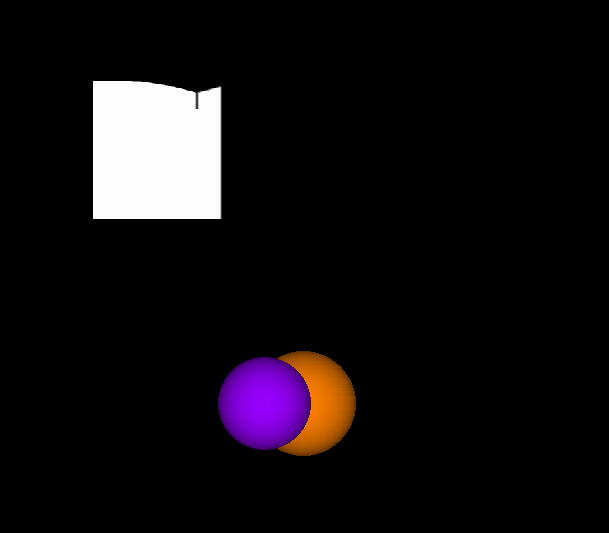
A binary star system is, at it's simplest, two stars rotating about a common center of mass. However, we have several complications to this simple explanation:
- Not all stars have the same exact mass, so their center of common mass varies from system to system.
- Depending on your position, the stars may or may not eclipse
- The stars do not give off uniform amounts of light, or luminosity. This is also known as limb-darkening.
- We want to be able to model and visualize the eclisping stars, their orbitals, and how that affects the luminosity.
- We want to be reasonably accurate, and try a different modeling technique.
Why does this complicate matters?
- We cannot simply solve the intersection of the two stars since there was no general formula to get an interesection of two circles. (At least not that I can think of.)
- Since limb-darkening is not uniform, and nonlinear, we can't "just" multiply the area of the interesection (assuming that we can get it) by some factor.
- We were the second group (crazy enough) to do this. The previous group used a two dimensional grid, calculating the the luminosity for each points.
So instead, we stepped into the unknown with a new alogrithim written from scratch, which we've named The Onion Alogrithim The onion alogrithim is really named for the rings that it makes. It is based on the idea that the 2-d grid makes too many redundant calculations. The limb-darkening law allows that for every point of a circle within the area of the star, the luminosity is the same. All we had to do was make a loop to step through the arcs of the area of the star, get the circumference, and multiply it by the luminosity value there... all we had to do was that. Simple no?
Our group was the first to form, and the last to get our project done.
So, our group has gone through it all, from writing code from scratch, to over-extensive debugging, and to the final crunch time.
The Eclipsing binary stars group members
- Ho-Sheng Hsiao.
- Bill Booth.
- Mike Coy.